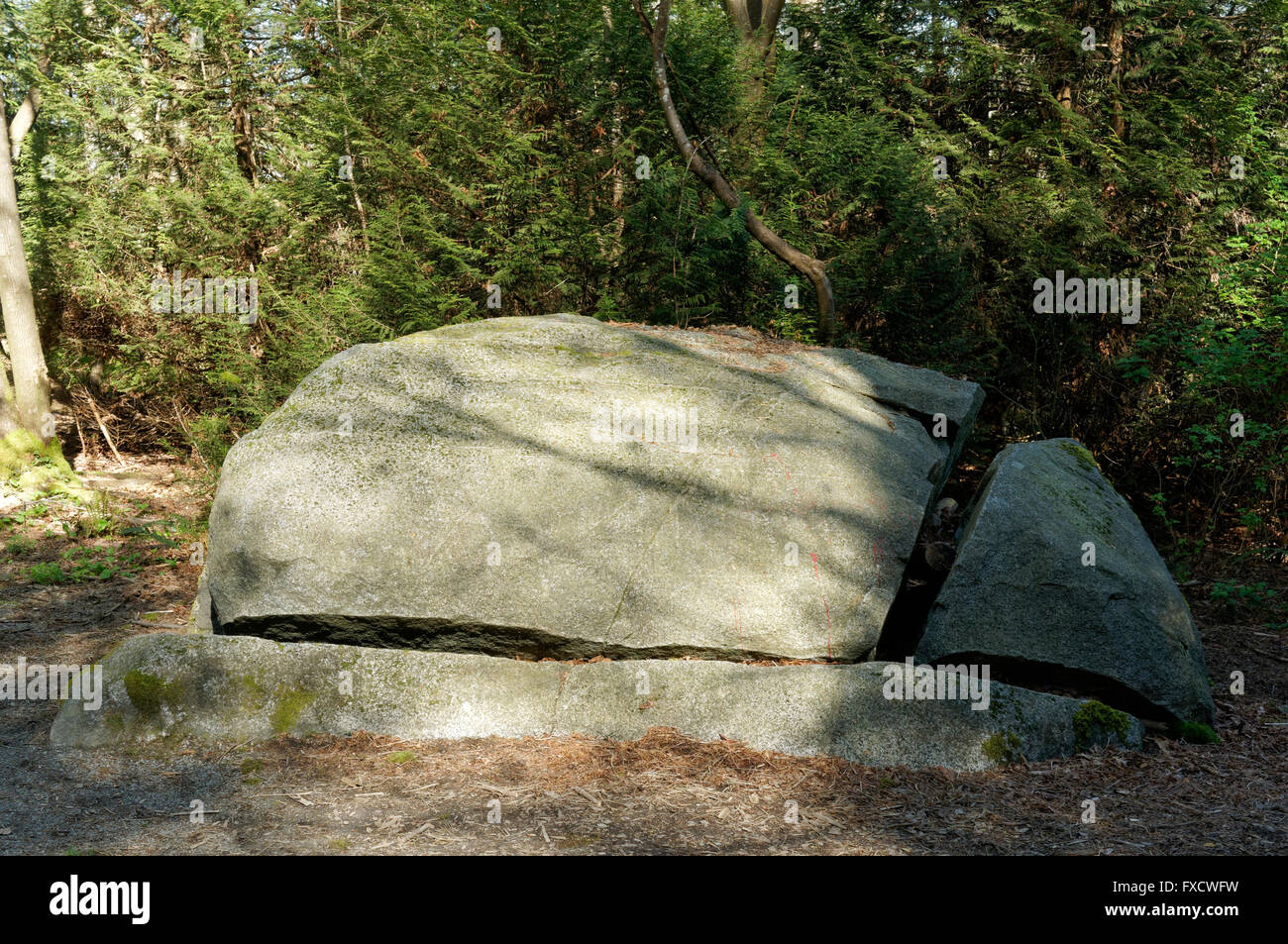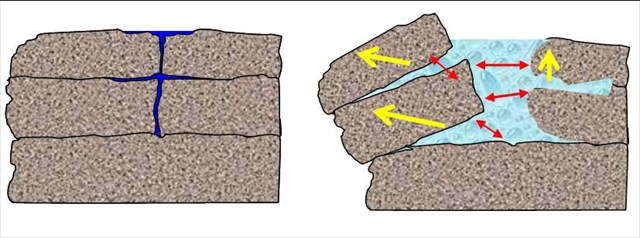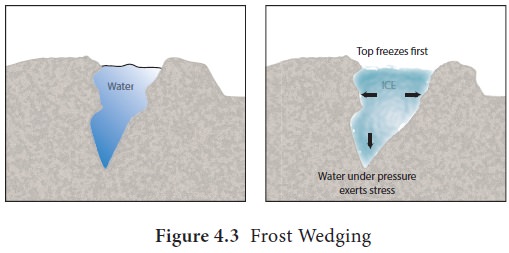Frost Wedging: Frost wedging occurs in places that have the right temperatures to freeze water and then melt water. This commonly happens in polar regions and mid latitude mountains where sunlight can melt water during the day and refreeze overnight when temperatures drop. Frost wedging is directly related to the fact that as water freezes its
Weathering – Physical, Chemical, Biological Weathering
Frost wedging. is the process by which water seeps into cracks in a rock, expands on freezing, and thus enlarges the cracks (Figure 5.1.1). The effectiveness of frost wedging is related to the frequency of freezing and thawing. Frost wedging is most effective in a climate like Canada’s.

Source Image: alamy.com
Download Image
Frost wedging is most effective in Canada’s climate, where for at least part of the year temperatures oscillate between warm and freezing. In many parts of Canada, the temperature swings between freezing at night and thawing in the day tens to hundreds of times a year.

Source Image: en.wikipedia.org
Download Image
Freeze-thaw A common feature in areas of effective frost wedging is a talus slope —a fan-shaped deposit of fragments removed by frost wedging from the steep rocky slopes above (Figure 5.1.4 5.1. 4 ). Figure 5.1.4 5.1. 4 An area with very effective frost-wedging near Keremeos, B.C.

Source Image: claremontgeography12.blogspot.com
Download Image
Where Is Frost Wedging Most Likely To Occur
A common feature in areas of effective frost wedging is a talus slope —a fan-shaped deposit of fragments removed by frost wedging from the steep rocky slopes above (Figure 5.1.4 5.1. 4 ). Figure 5.1.4 5.1. 4 An area with very effective frost-wedging near Keremeos, B.C. Nov 21, 2023Lesson Summary Frequently Asked Questions What happens in frost wedging? Frost wedging is also known as ice wedging. When frost wedging occurs, the liquid form of water enters into
Geography 12 Rocks: Frost Wedging
Weathering is a process that turns bedrock into smaller particles, called sediment or soil. Mechanical weathering includes pressure expansion, frost wedging, root wedging, and salt expansion. Chemical weathering includes carbonic acid and hydrolysis, dissolution, and oxidation. Erosion is a mechanical process, usually driven by water, wind GC43QP8 Felsenmeer (Earthcache) in New Hampshire, United States created by Nhtravelers5

Source Image: geocaching.com
Download Image
Lab: What effect does increased surface area on weathering? – ppt download Weathering is a process that turns bedrock into smaller particles, called sediment or soil. Mechanical weathering includes pressure expansion, frost wedging, root wedging, and salt expansion. Chemical weathering includes carbonic acid and hydrolysis, dissolution, and oxidation. Erosion is a mechanical process, usually driven by water, wind

Source Image: slideplayer.com
Download Image
Weathering – Physical, Chemical, Biological Weathering Frost Wedging: Frost wedging occurs in places that have the right temperatures to freeze water and then melt water. This commonly happens in polar regions and mid latitude mountains where sunlight can melt water during the day and refreeze overnight when temperatures drop. Frost wedging is directly related to the fact that as water freezes its

Source Image: brainkart.com
Download Image
Freeze-thaw Frost wedging is most effective in Canada’s climate, where for at least part of the year temperatures oscillate between warm and freezing. In many parts of Canada, the temperature swings between freezing at night and thawing in the day tens to hundreds of times a year.

Source Image: heartofavalonia.org
Download Image
Permafrost and Periglacial Processes | Geoscience Journal | Wiley Online Library Frost wedging won’t be as important in warm areas where freezing is infrequent, in very cold areas where thawing is infrequent, or in very dry areas, where there is little water to seep into cracks. Figure 8.4 A rock broken by ice wedging sits in a stream in Mount Revelstoke National Park, Canada.

Source Image: onlinelibrary.wiley.com
Download Image
5.1 Mechanical Weathering – Physical Geology A common feature in areas of effective frost wedging is a talus slope —a fan-shaped deposit of fragments removed by frost wedging from the steep rocky slopes above (Figure 5.1.4 5.1. 4 ). Figure 5.1.4 5.1. 4 An area with very effective frost-wedging near Keremeos, B.C.

Source Image: opentextbc.ca
Download Image
Freeze-thaw Nov 21, 2023Lesson Summary Frequently Asked Questions What happens in frost wedging? Frost wedging is also known as ice wedging. When frost wedging occurs, the liquid form of water enters into

Source Image: heartofavalonia.org
Download Image
Lab: What effect does increased surface area on weathering? – ppt download
Freeze-thaw Frost wedging. is the process by which water seeps into cracks in a rock, expands on freezing, and thus enlarges the cracks (Figure 5.1.1). The effectiveness of frost wedging is related to the frequency of freezing and thawing. Frost wedging is most effective in a climate like Canada’s.
Freeze-thaw 5.1 Mechanical Weathering – Physical Geology Frost wedging won’t be as important in warm areas where freezing is infrequent, in very cold areas where thawing is infrequent, or in very dry areas, where there is little water to seep into cracks. Figure 8.4 A rock broken by ice wedging sits in a stream in Mount Revelstoke National Park, Canada.